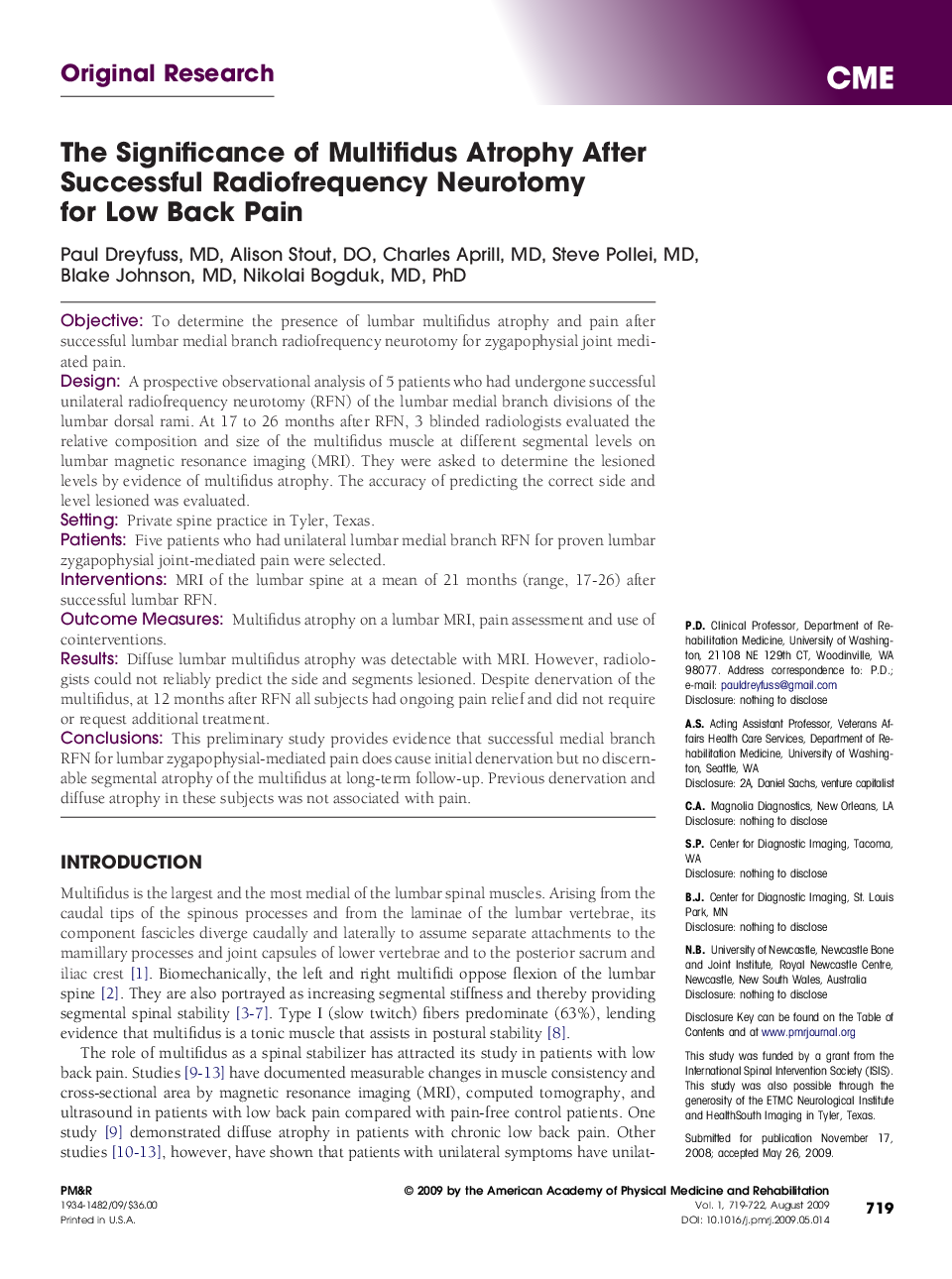| Article ID | Journal | Published Year | Pages | File Type |
|---|---|---|---|---|
| 2706679 | PM&R | 2009 | 4 Pages |
ObjectiveTo determine the presence of lumbar multifidus atrophy and pain after successful lumbar medial branch radiofrequency neurotomy for zygapophysial joint mediated pain.DesignA prospective observational analysis of 5 patients who had undergone successful unilateral radiofrequency neurotomy (RFN) of the lumbar medial branch divisions of the lumbar dorsal rami. At 17 to 26 months after RFN, 3 blinded radiologists evaluated the relative composition and size of the multifidus muscle at different segmental levels on lumbar magnetic resonance imaging (MRI). They were asked to determine the lesioned levels by evidence of multifidus atrophy. The accuracy of predicting the correct side and level lesioned was evaluated.SettingPrivate spine practice in Tyler, Texas.PatientsFive patients who had unilateral lumbar medial branch RFN for proven lumbar zygapophysial joint-mediated pain were selected.InterventionsMRI of the lumbar spine at a mean of 21 months (range, 17-26) after successful lumbar RFN.Outcome MeasuresMultifidus atrophy on a lumbar MRI, pain assessment and use of cointerventions.ResultsDiffuse lumbar multifidus atrophy was detectable with MRI. However, radiologists could not reliably predict the side and segments lesioned. Despite denervation of the multifidus, at 12 months after RFN all subjects had ongoing pain relief and did not require or request additional treatment.ConclusionsThis preliminary study provides evidence that successful medial branch RFN for lumbar zygapophysial-mediated pain does cause initial denervation but no discernable segmental atrophy of the multifidus at long-term follow-up. Previous denervation and diffuse atrophy in these subjects was not associated with pain.
